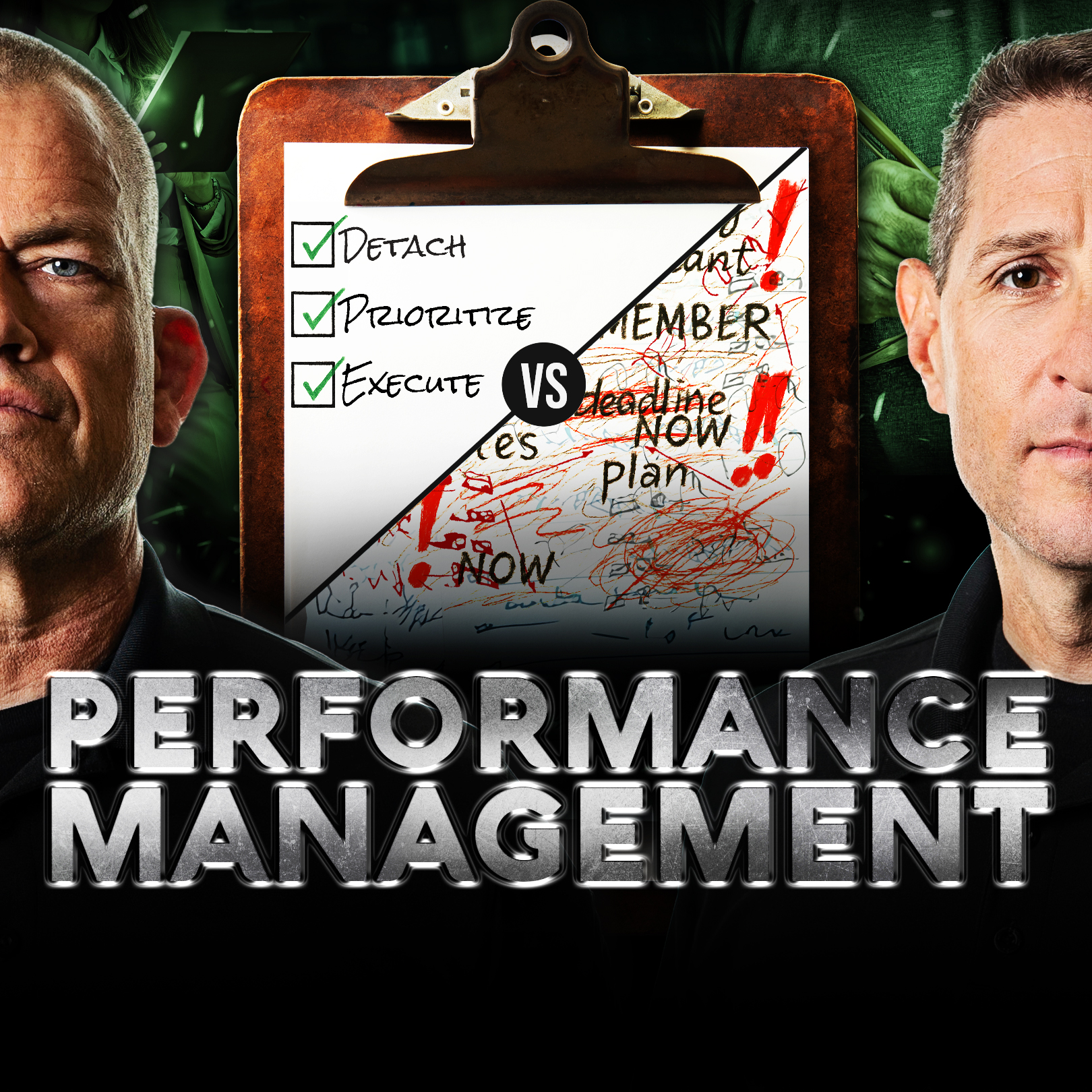Knowing how to manage performance is a crucial leadership skill that, when done effectively, can lead to a highly engaged, productive team that consistently achieves its goals. Managing performance isn’t just about setting expectations and measuring results—it is about creating an environment where individuals feel supported and challenged, where there are opportunities to grow and develop.
We will explore the key elements of managing performance, from setting clear expectations to giving actionable feedback, and how you can augment your leadership to enhance team results.
Set Clear Expectations
An important first step in how to manage performance effectively is to set clear, measurable expectations. This is critical when we think about empowering our team. Whether you’re leading a team, managing individuals, or wanting to know how to manage staff performance, it’s important that everyone understands what success looks like. People need to know why they are doing what they are doing and their work on the strategic mission. When given clear parameters and expectations, employees can make good decisions and focus on accomplishing work that aligns with the organization’s broader goals.
Define Goals and Objectives:
Clear goals provide direction and ensure everyone is on the same page. Give your team an opportunity to develop and discuss their goals individually. If you have additional ones or adjustments, this is your chance to align on realistic expectations and outcomes. This is particularly crucial when learning how to manage staff performance, as vague expectations can lead to confusion and misalignment. Allowing team members to come up with their own goals gives them ownership in the process, which is likely to lead to more of those goals being achieved.
A blend of qualitative and quantitative goals that can be measured provides team members with a chance to focus on executing the organization’s values (qualitative) and contributing to crucial key performance indicators (KPIs) that impact overall success (quantitative).
Align with Organizational Goals:
Reviewing goals with team members is an opportunity to ensure that individual goals align with the company’s strategic objectives. Good leaders use these meetings to express support and reinforce the importance of each team member’s contributions to the organization’s overall success and vision.
Set Milestones:
When setting goals, it is important to think about timelines for achievement. Some goals may be simple and easier to achieve in the short term. Other goals may be more complex and require a longer timeline to execute or to see results because of the sustained effort required. Collaborate with employees to break down larger goals into manageable milestones. In doing so, you give them an opportunity for ownership in deciding what are realistic timelines to achieve smaller pieces of the bigger puzzle. And by having regular check-ins on these milestones, there is a chance to jointly assess progress and address any obstacles early on, ensuring that performance stays on track.
Setting clear expectations not only drives performance but also instills confidence in your team. Good leaders consistently execute and set a strong example of what good performance looks like. They also empower their team members to set their own goals and collaborate with them to ensure they feel supported and are aligned with the strategic mission.
Provide Regular Feedback
Knowing how to manage performance isn’t just about tracking results- it is about building good relationships, offering support, and regularly communicating with your team. As a leader, part of how to manage staff performance involves having discussions that focus on what is going well, what is not going well, and where there are opportunities for improvement. These are not always easy or the most convenient conversations to hav,e but giving feedback—both positive and constructive—is crucial for fostering an environment of continuous improvement.
Positive Reinforcement:
Recognizing and celebrating achievements is an important element that drives team performance. It is necessary to appreciate when someone meets or exceeds expectations and acknowledge their efforts publicly or privately. This positive reinforcement not only boosts morale but also reinforces desired behaviors, encouraging team members to keep performing at a high level.
As with anything in life, however, balance is important. Good leaders understand that too much praise can come off as disingenuous and has the potential to lead to false confidence. Recognizing every little success a team or person has loses impact after a while and may have the opposite effect on team morale.
Managing team performance requires a healthy, balanced recognition of efforts and achievements to keep confidence steady and performance consistent.
Constructive Criticism:
How to performance manage someone includes addressing areas for improvement. Leadership requires observation of team members to see what they are doing well, what they are not doing well, and where they can improve. These questions are also what we utilize when successfully run a debrief. The debrief, individually with a team member or collectively with the team, is a great way to discuss the execution of an assignment or progress towards a goal that leads to actionable and specific takeaways that are focused on growth. Recognizing what went well and areas for improvement is a chance to get feedback from an employee, hear from their perspective what they could do differently, and align on how they will make adjustments moving forward.
Feedback can be tricky for managers who don’t consistently practice it. Leaders who regularly practice debriefing with their team have better outcomes and success because consistent improvement, no matter how small, is already established as a part of the culture.
Relationships:
Your relationship with your employees is the biggest factor in giving them feedback. The better the relationship, the easier it is to give feedback. When providing constructive criticism, the employee knows you are coming from a good place. You have a relationship built on trust, respect, listening, influence, and care, and that underpins the conversation. Leaders who genuinely care about their people, want to see them succeed and put the team ahead of themselves are better able to have hard conversations, and those lead to more positive outcomes.
Whether it’s a quick check-in or a more formal discussion, keeping communication lines open and providing real-time feedback is key. Waiting to have a challenging conversation is the same as ignoring a problem. The sooner you have the conversation, the easier it is and faster to forward progress. The more you prolong the conversation, the more the problem grows, things are not addressed, and the situation worsens. Good relationships help communicate regularly with employees and address challenges as early as possible.
By incorporating regular feedback into your performance management process, you create a culture of transparency and growth. Employees feel more confident in their abilities when they know where they stand and how they can continue to improve.
Foster Growth and Opportunity
If you want to know how to manage performance successfully, it’s essential to cultivate an environment where employees realize a pathway for growth, recognize the importance of relationships, see opportunities for promotion, and feel supported by leadership. As the leader, you should encourage learning through your own example. Look for ways to improve yourself, and respond to mistakes and shortfalls by taking ownership. When your team sees this from their leadership, they are more likely to take calculated risks, collaborate with others, learn from mistakes, and continuously strive for improvement.
Encourage Development:
Create opportunities for team members to develop their skills. You should offer the tools to do so through training programs, mentoring, or giving employees the chance to work on new projects. If an employee expresses interest in learning a new skill, further developing an idea, or running with a project, support them in these endeavors as much as possible. When people feel like they have ownership and autonomy, they’re more likely to remain engaged and motivated.
Model Growth Mindset:
As a leader, you must set the tone. Your team watches everything you do and responds accordingly. Good leaders embrace challenges, show resilience in the face of setbacks, and demonstrate that failure is part of the learning process. When you lead by example, your team will follow suit.
A high-performing team depends on the individual leaders fostered at every level. Focus on creating an environment where team members have ownership over their role, see a pathway for growth, and welcome continuous improvement. If they know their contributions and relationships are valued in the organization, they will be more determined to improve their performance for the good of the team.
Conclusion: Effective Performance Management
Performance management is an ongoing process that requires clear expectations, good relationships, and regular communication. Only through these factors can we create an environment where growth and development are the norm. Effective performance management requires a leader to be proactive—setting the stage for success, offering support when needed, and creating an environment where employees can continuously improve.
If you’re looking to improve your leadership skills and learn more about performance management, enroll in a course at [academy.echelonfront.com]. Equip yourself with the tools and strategies to lead your team to greater success.



